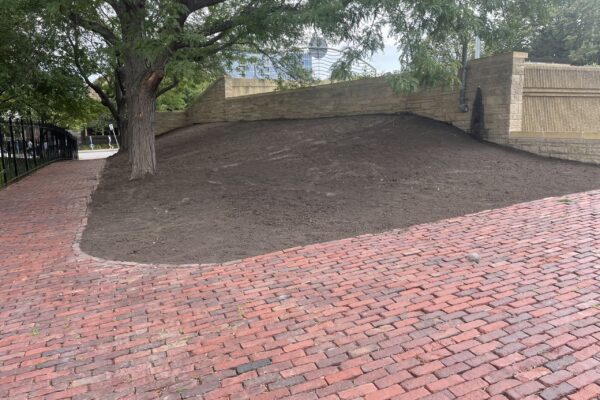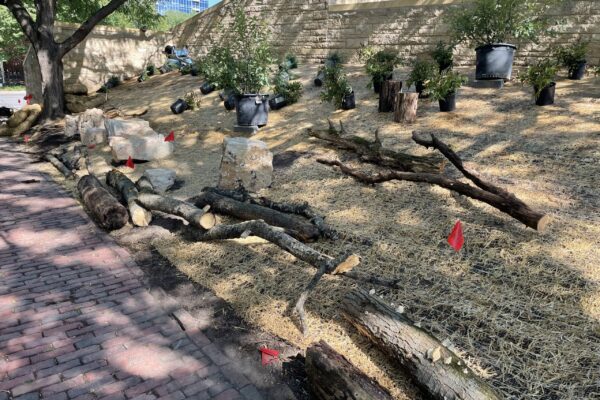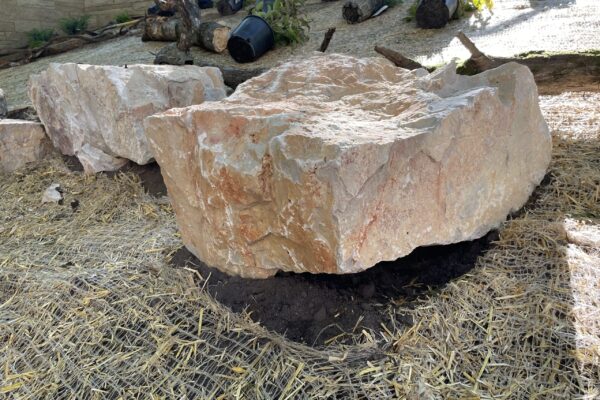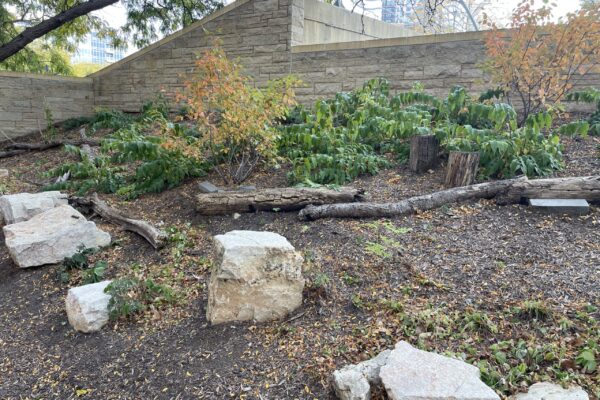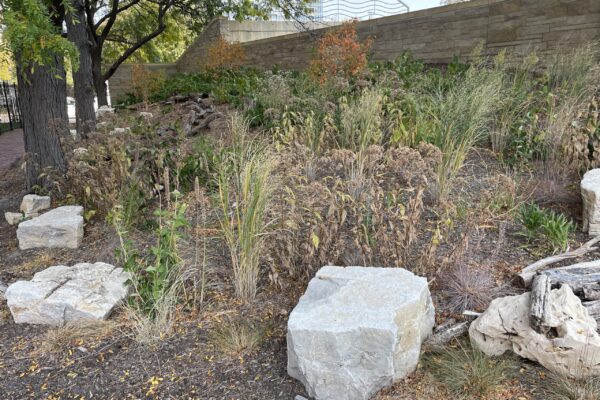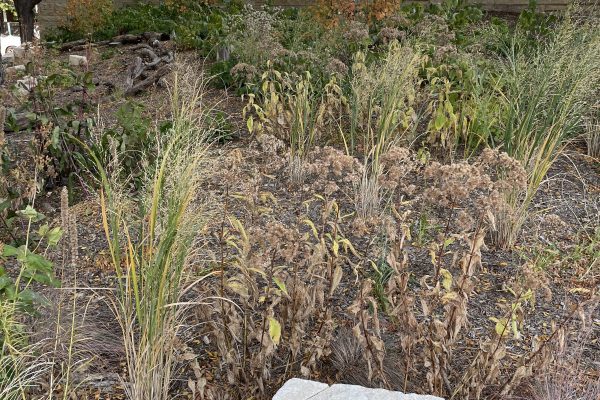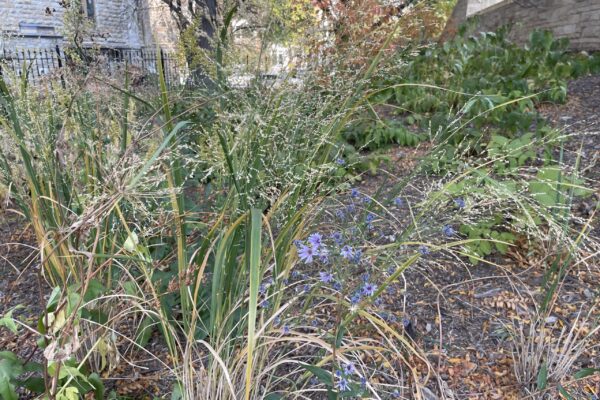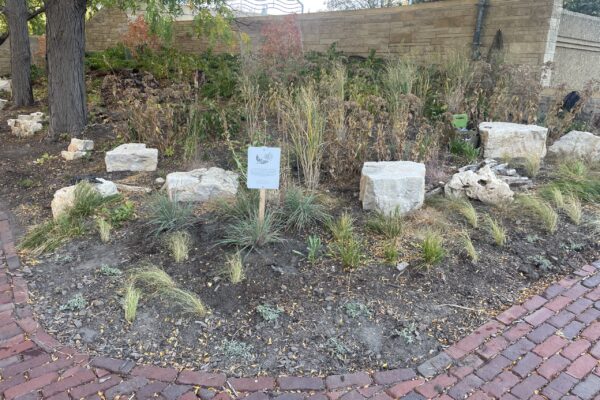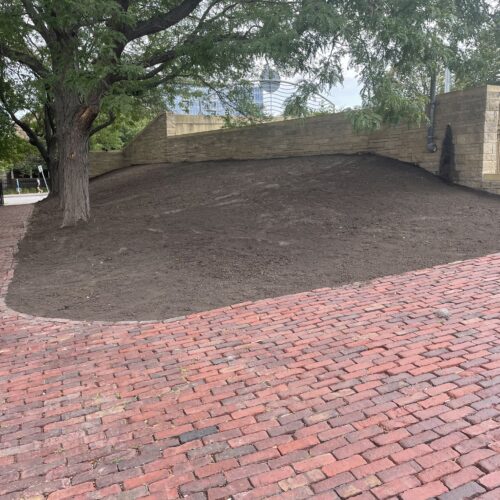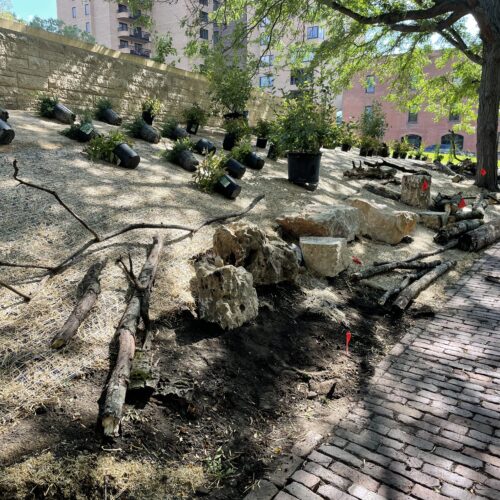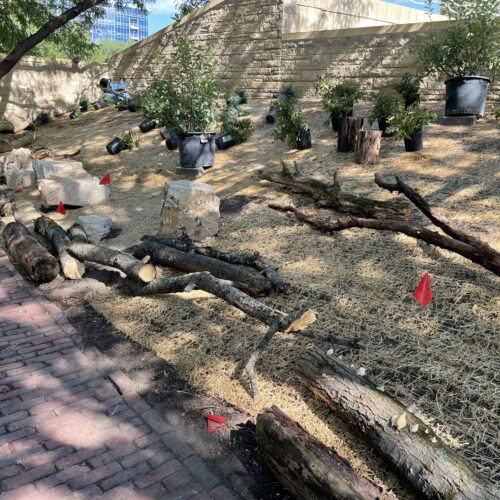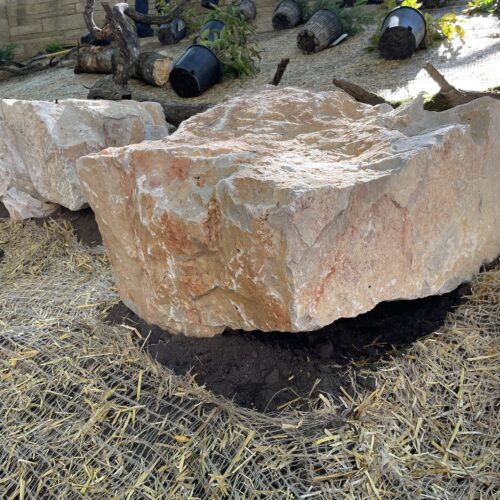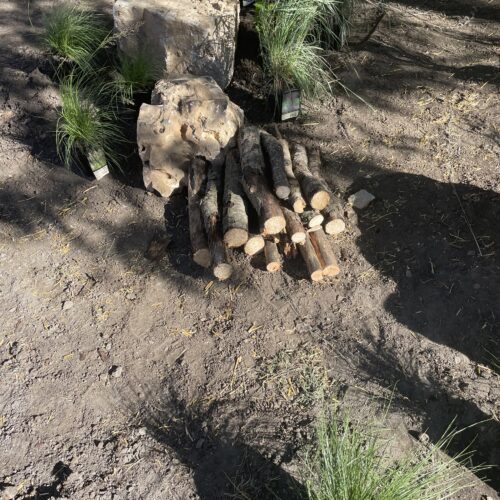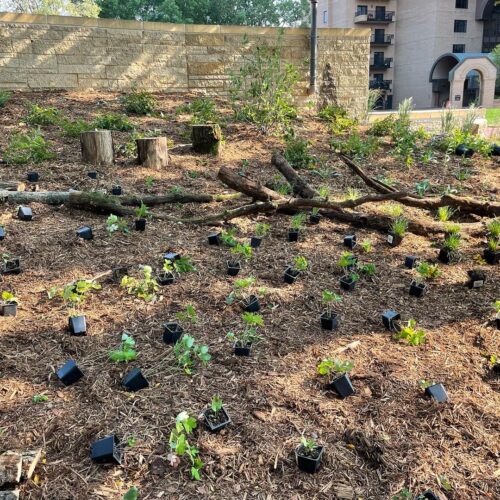The owners of this property contacted us to design and install a native species pollinator garden on a narrow, steeply-sloped bed running the length of a public walk near St Anthony Main. The client’s radical vision was to turn the stark modernist planting of mature locust trees and rock mulch into a vibrant pollinator habitat, specifically designed to provide food and shelter for native bee species.
Inspired by the client’s vision, we transformed the challenging site from a sterile strip of land into a vital patch of urban pollinator habitat. Instead of rock mulch, a prairie pollinator meadow now flanks both entrances – taking advantage of the sunnier edges and providing the bulk of the pollen and nectar resources for visiting bees (and a wide range of other native insects). The shade of the central garden has been redesigned as a rich woodland habitat, with flowering understory trees, bee-friendly shrubs and low-growing herbaceous species. In this year-round bee haven, carefully selected groundcover species supply protection for ground-dwelling bees, while large stones and “fallen” logs provide dwelling opportunities for crevice nesting and wood tunneling bee species.
In coming years, informational signage will highlight the unique ecological elements of the garden to engage and inspire passing pedestrians.


